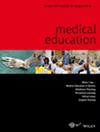Profiling learning strategies of medical students: A person-centered approach
Abstract
Background
Students within a cohort might employ unique subsets of learning strategies (LS) to study. However, little research has aimed to elucidate subgroup-specific LS usage among medical students. Recent methodological developments, particularly person-centred approaches such as latent profile analysis (LPA), offer ways to identify relevant subgroups with dissimilar patterns of LS use. In this paper, we apply LPA to explore subgroups of medical students during preclinical training in anatomy and examine how these patterns are linked with learning outcomes.
Methods
We analysed the LS used by 689 undergraduate, 1st and 2nd-year medical students across 6 German universities who completed the short version of the Learning Strategies of University Students (LIST-K) questionnaire, and answered questions towards external criteria such as learning resources and performance. We used the thirteen different LS facets of the LIST-K (four cognitive, three metacognitive, three management of internal and three management of external resources) as LPA indicators.
Results
Based on LPA, students can be grouped into four distinct learning profiles: Active learners (45% of the cohort), collaborative learners (17%), structured learners (29%) and passive learners (9%). Students in each of those latent profiles combine the 13 LS facets in a unique way to study anatomy. The profiles differ in both, the overall level of LS usage, and unique combinations of LS used for learning. Importantly, we find that the facets of LS show heterogeneous and subgroup-specific correlations with relevant outcome criteria, which partly overlap but mostly diverge from effects observed on the population level.
Conclusions
The effects observed by LPA expand results from variable-centered efforts and challenge the notion that LS operate on a linear continuum. These results highlight the heterogeneity between subgroups of learners and help generate a more nuanced interpretation of learning behaviour. Lastly, our analysis offers practical implications for educators seeking to tailor learning experiences to meet individual student needs.


 求助内容:
求助内容: 应助结果提醒方式:
应助结果提醒方式:


